12 Creative Tips For a Stunning Urban Garden
Do you have a typical urban garden?
Usually it’s rectangular. It can be seen from the house. And you’d like it to look larger? Or to reflect your own style, the way the house does?
Of course, if you could afford it, you’d get Charlotte Rowe Garden Design in to wave their magic wand over it. The bindweed – or the begonias – wouldn’t stand a chance.
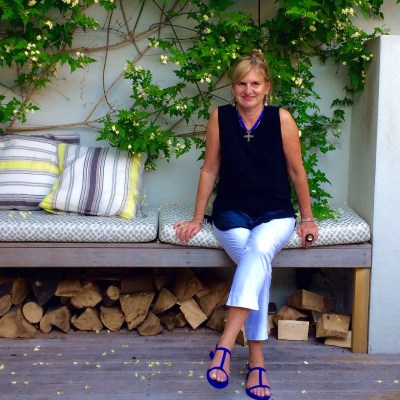
Award-winning garden designer, Charlotte Rowe, in her own London garden. We’re talking about how to create a stunning urban garden.
No Man’s Land, Charlotte’s garden at the 2014 RHS Chelsea Flower Show not only won ‘Gold’, but was everywhere. It was featured in all the major newspapers and on the TV, even in ‘The Archers’ radio drama.
Many Charlotte Rowe Garden Design clients have a typical small urban garden.
At least they’re typical before Charlotte and her design director, Tomoko Kawauchi, work on them. They’ve transformed roof gardens, stylish balconies and larger family town gardens.
When it comes to urban gardens, the rich have the same problems we do. They want their garden to look fabulous, They want to make the most of the space – which is always limited.
And they want a garden that works with their lifestyle, whether they have a young family, travel frequently or entertain a lot.
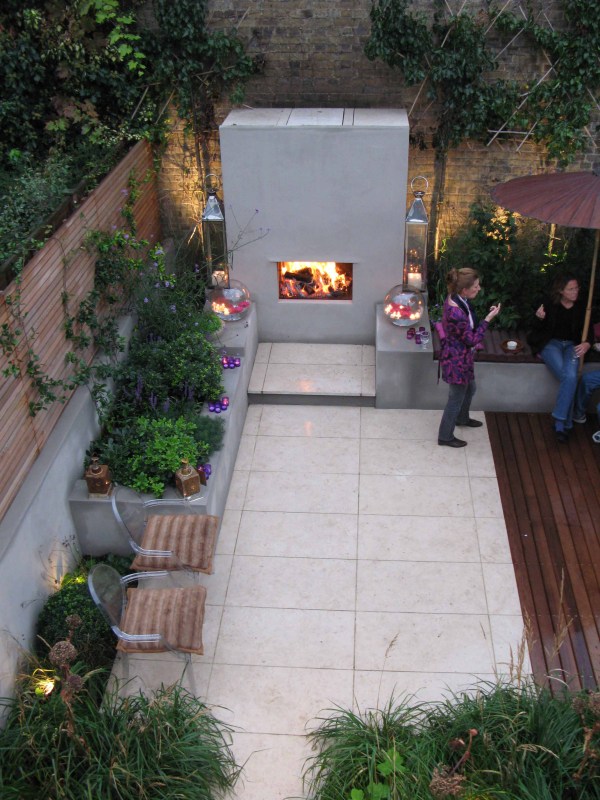
Charlotte’s garden from the house. Photo by Charlotte Rowe Garden Design.
1) Start with the view from the house
‘All my gardens start off the house,’ says Charlotte. With our climate, you’ll be looking at your garden more than you’ll be in it.
‘Starting off the house’ means that you always consider the garden as it stands in relation to the house. Plan it by looking out from the windows or the door, and think about what you’ll see when you look back at the house.
We’re sitting in her own garden, which was one of the first gardens she designed. The main focal point is a smart, white fireplace and chimney breast which you can glimpse through the house when you come in the front door.
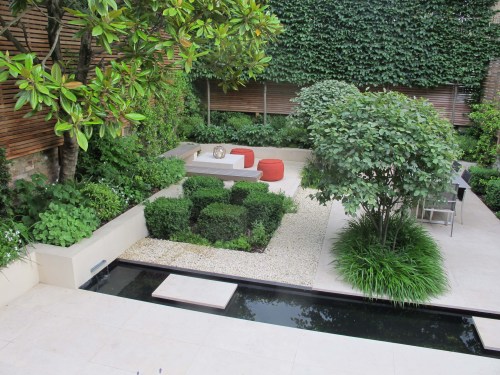
Charlotte believes that straight lines are best in rectangular gardens, but they don’t look boxy because her gardens are assymetrical. Photo by Charlotte Rowe Garden Design.
2) Don’t have curves or a line down the middle
‘I like straight lines,’ says Charlotte. ‘I don’t like curves. A lot of people want to off-set the boxiness of a rectangular urban garden by introducing circles, but I don’t think that works.
Curves create “pinch points” in the planting, where it’s difficult to fit plants in. I line things up, but not symmetrically.
The fireplace in my garden, for example, lines up with the front door not with a central spot in the garden.’
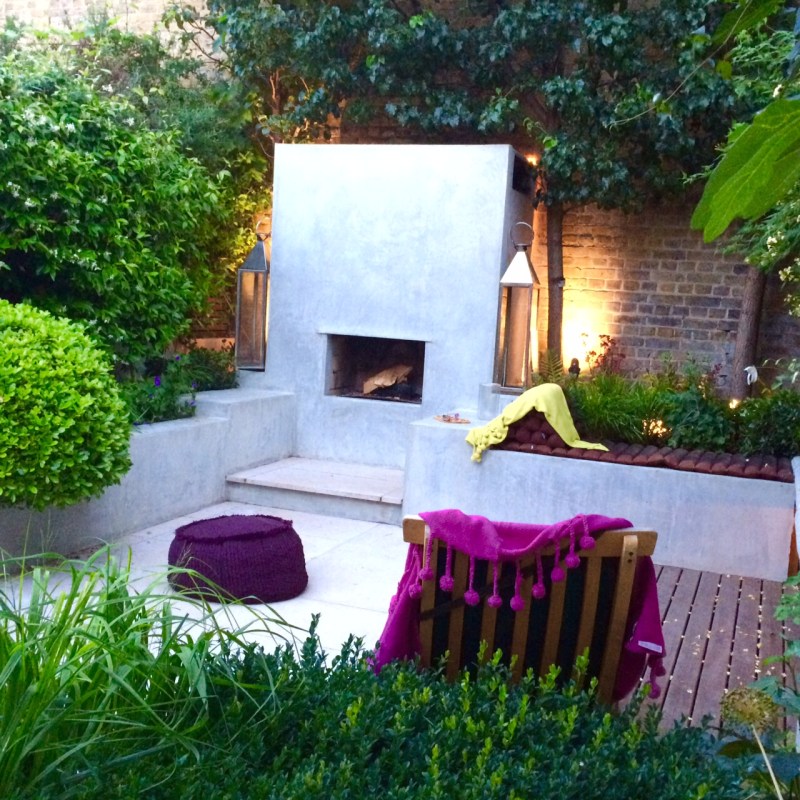
Charlotte’s focal point is a fireplace. Yet it’s not placed centrally in the garden. It’s in line with the front door and back door of the house. The splashes of purple are a crocheted stool from one of her favourite garden furniture designers Paola Lenti and a purple shawl draped over a chair. Pops of bright colour work well in a neutral palette.
3) Break up the space to make a small city garden feel bigger
If you want to make a rectangular garden more interesting, think about breaking up the space with paths and borders. The bigger, the better!
‘Everyone thinks that having as much lawn as possible will make the garden look larger,’ says Charlotte. ‘It doesn’t. If you take the lawn right up to the edges of the garden, you’ll actually make the garden look smaller. Break up the space with planting and paths.
Sometimes people don’t want to “waste space” by having big beds, but a few big beds, breaking up the space, look better than narrow beds down the sides or along the edges.’
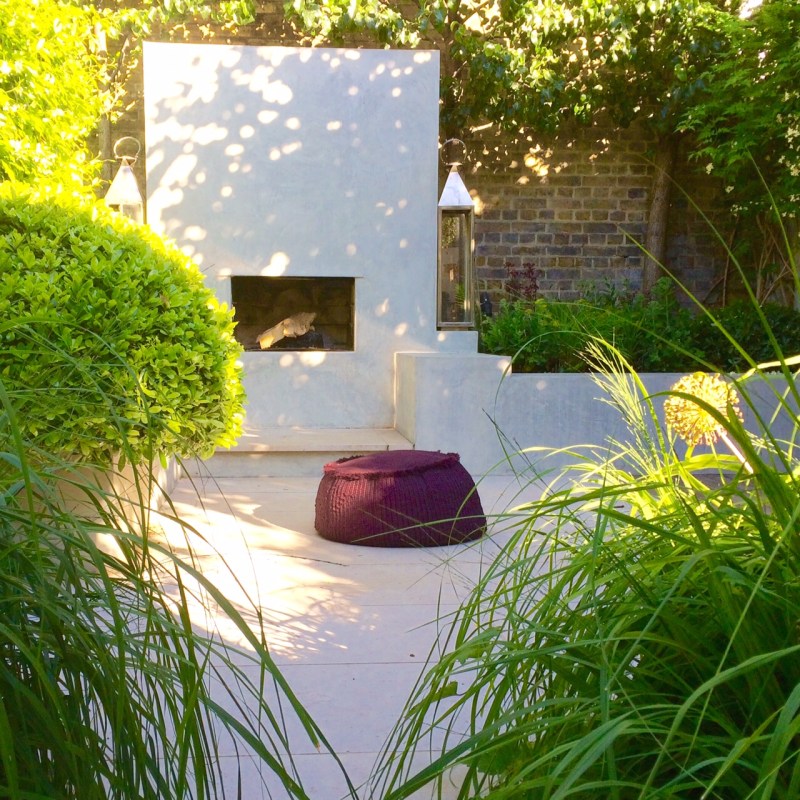
Two beds across the garden, just outside the back door ‘break up the space’ and frame the focal fireplace. The planting is lush and generous.
4) Urban garden design needs lush planting
Getting the ‘bones’ of a garden right is the key factor. But once the architecture is in place, then lush planting will make a garden feel more dramatic.
Charlotte has two beds (“promontories”) directly in front of the kitchen doors, which frame the view of the fireplace. Lavish greenery tumbles out of them.
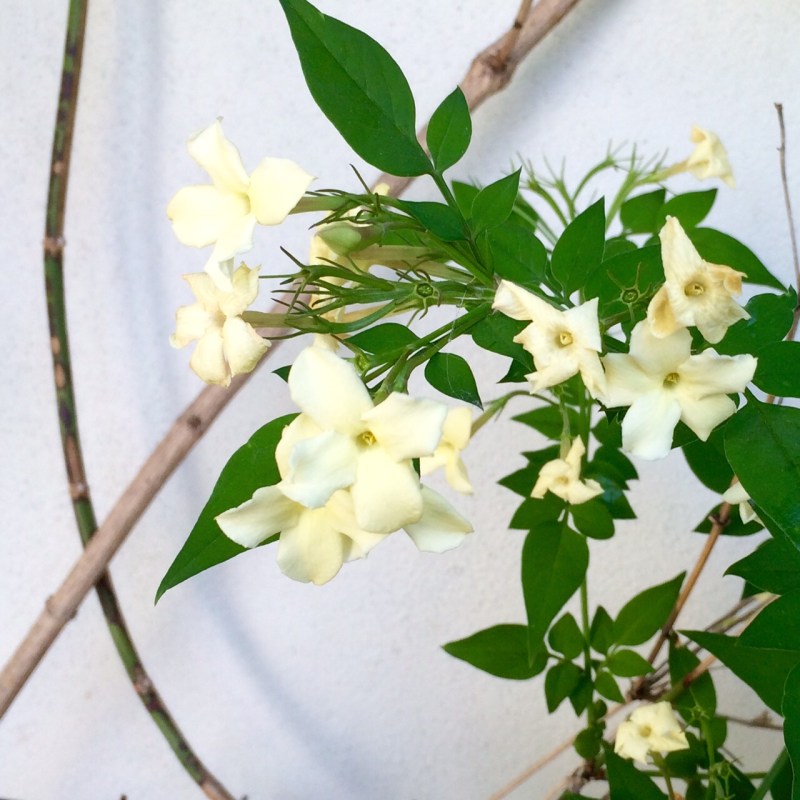
Charlotte uses a few very hard-working plants to make a small garden planting look more lush. Jasmine ‘Clotted Cream’ is a stylish alternative to the more usual honeysuckles and it blasts out scent.
5) But use a limited palette of plants
Charlotte uses a relatively small number of different plants in a town garden, choosing them carefully for a long season of interest. There may be only a dozen or so plants, repeated in generous clumps. ‘Planting that’s too bitty looks fussy in a small town garden.’
She’s also good at finding unusual and stylish variants of well known plants – in her garden Jasmine ‘Clotted Cream’ makes a delightful change from the usual pink-tinged jasmines. And she only uses one kind of Santolina – Primrose Gem.
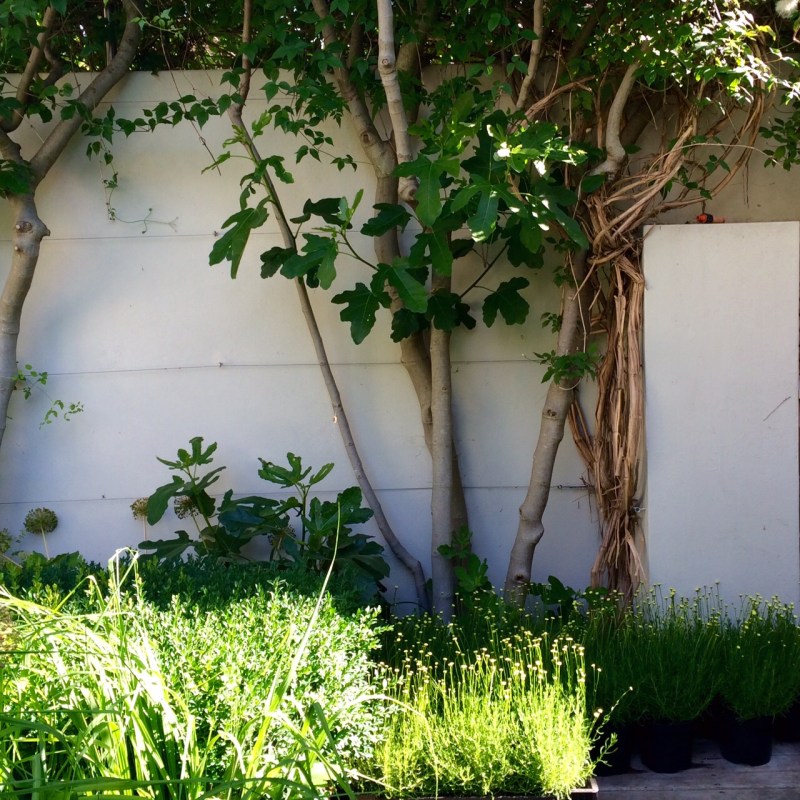
This fig tree, with its bare trunk, is a generous yet space-saving tree for a small urban garden. Beneath it are several crates of Santolina ‘Primrose Gem’ awaiting delivery to a client. ‘Garden designers’ gardens are always full of left-over plants or plants waiting to be delivered,’ says Charlotte.
6) Choose plants which have alot to offer
One of Charlotte’s favourite trees for a small garden is Amelanchier Lamarkii – it has spring blossom, an elegant shape and beautiful autumn colour.
In her own garden she has Pyrus calleyrana ‘Chanticleer’, because it also has blossom and autumn colour and keeps its leaves until November. (Pyrus calleyrana ‘Chanticleer’ or ornamental callery pear is one of our perfect-for-privacy garden trees.)
Her favourite climbers include the evergreen trachelospermum jasminoides (which is pumping out fragrance as we talk), which looks good all year round.
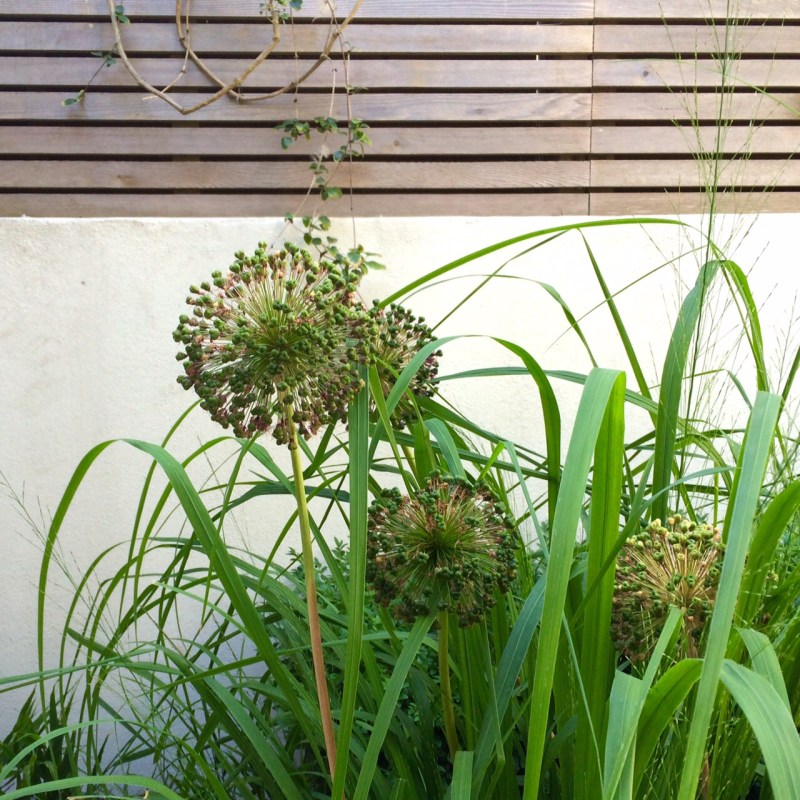
Alliums provide summer colour and architectural elegance for months – a hard-working plant
7) Design the garden round the furniture
You need to know what furniture you’re going to have in an urban garden and where you want to put it before designing the garden, according to Charlotte.
She often uses built-in benches to make the most of space, and she likes modular or funky furniture like Paola Lenti’s crocheted garden chairs with their powerful pops of colour.
Her smallest garden was just a balcony, and they had a table built to fit because there weren’t any narrow enough tables to buy.
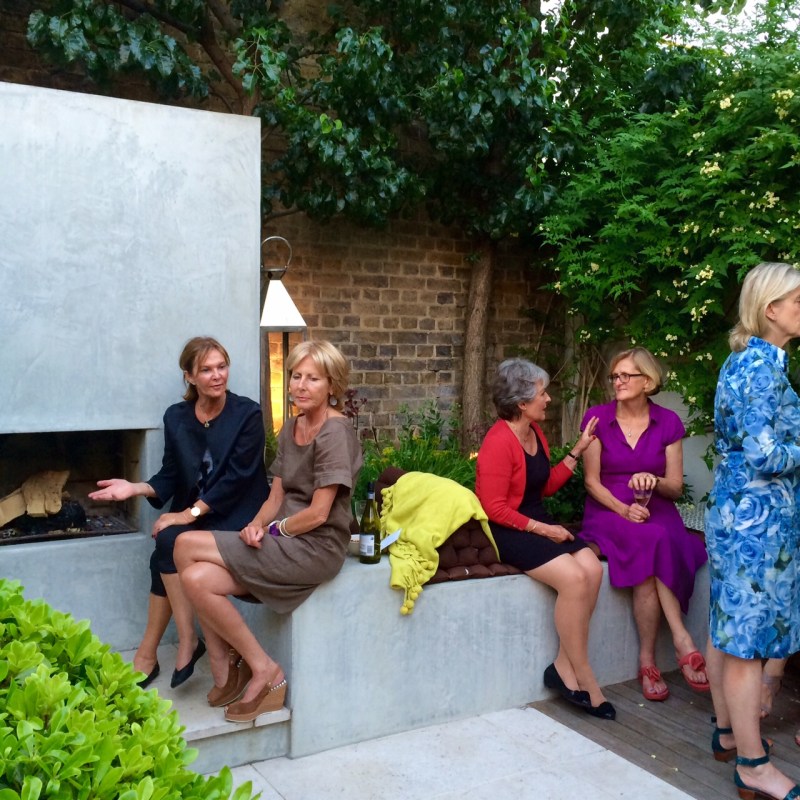
In Charlotte’s garden, the raised beds double up as bench seating – perfect for friends to perch on for a summer evening drink.
8) Build in storage
Charlotte has made the most of every inch with built-in benches that double as log storage and running stylish cupboards down the ‘side return’. Most Victorian town houses in the UK have a back extension that juts out into the garden and the space down the side can be lost.
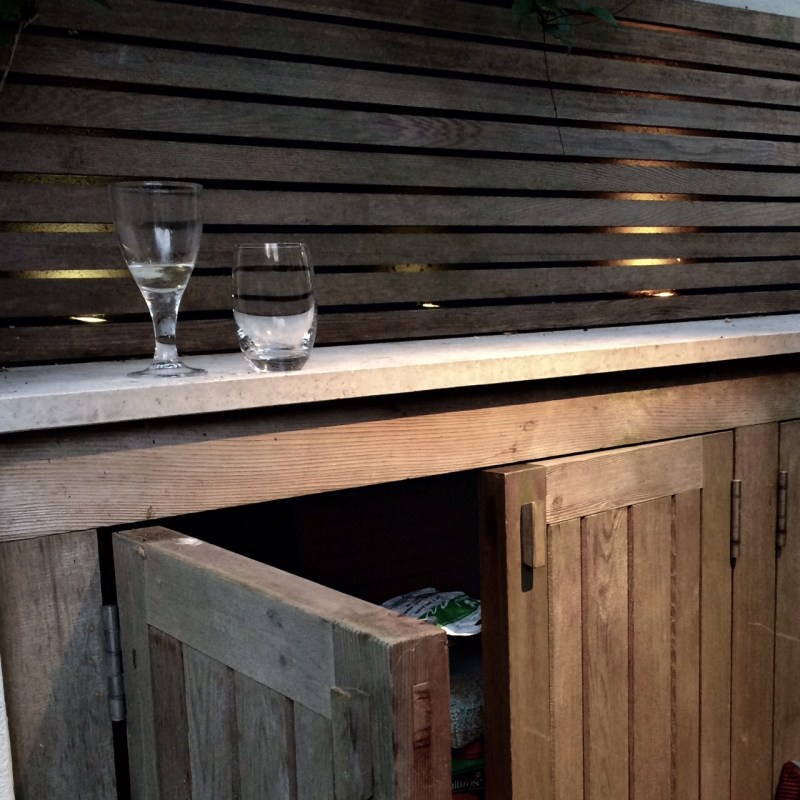
Teak cupboards down the ‘side return’ make space-saving storage. The surface is available for drinks or as a workbench.
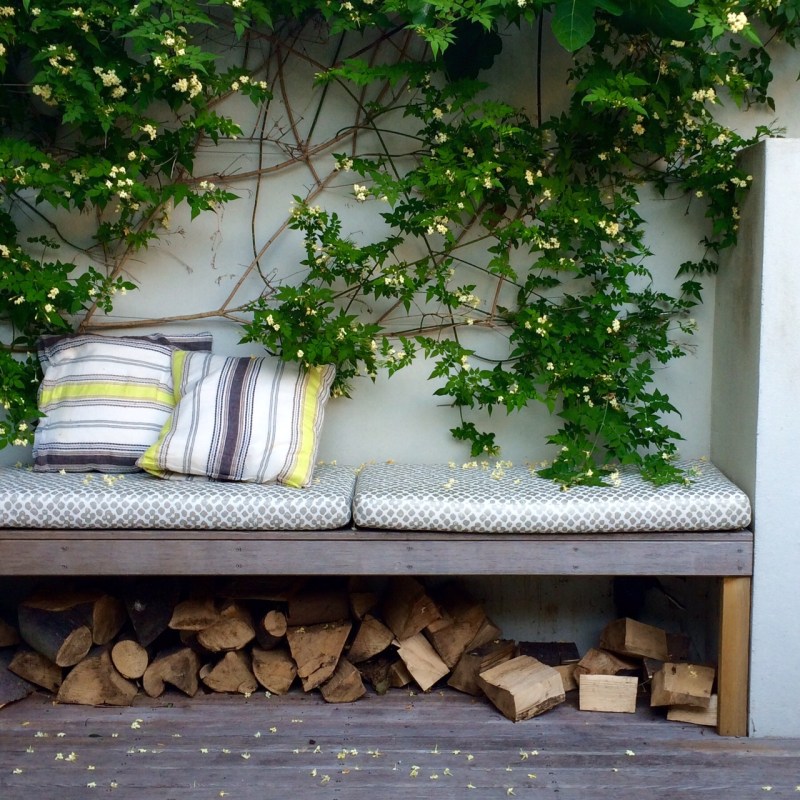
Charlotte’s bench-cum-logstore…draped with Jasmine ‘Clotted Cream’
9) Continue the flooring inside and outside the house
In some of the gardens Charlotte designs, she chooses the paving for the garden ‘first’ and the kitchen floor is chosen to match or to go with it. Running the same or co-ordinating flooring inside and out gives a sense of spaciousness.
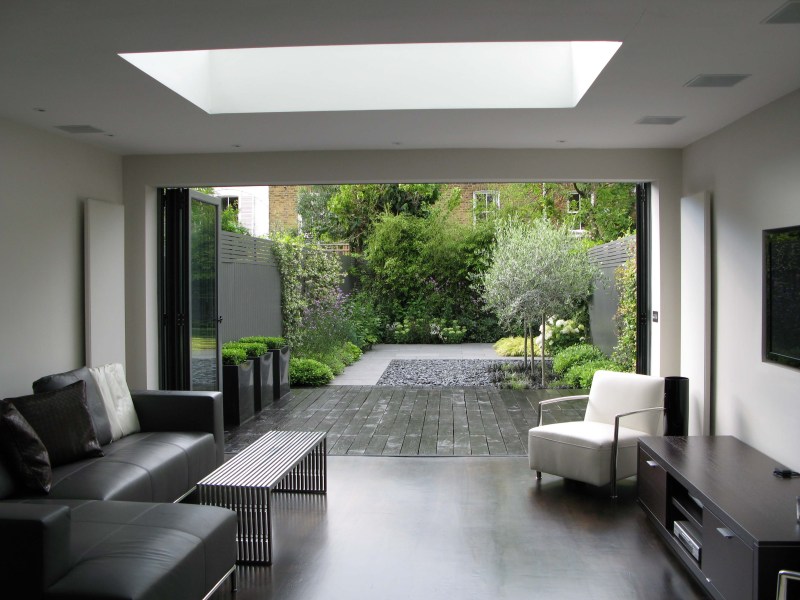
The flooring in this kithen co-ordinates and merges with that of the garden. A very good tip to make an urban garden space look larger. Photo and design by Charlotte Rowe Garden Design
10) Line paving up with your focal point or with the house.
Charlotte is meticulous about lining the edges of her paving up so that there are straight continuous lines where she wants them. ‘I’m a bit of a tyrant,’ she says. ‘I’ve made contractors take paving up if it isn’t right.’ In her own garden, the paving lines up with the fireplace.
11) Dark fencing or walls make an urban garden look larger
Dark colours make a space recede, and Charlotte finds that painting fencing black or dark colours helps make the garden feel larger. ‘People worry that it’ll be too dark,’ she says, ‘but it works really well.’
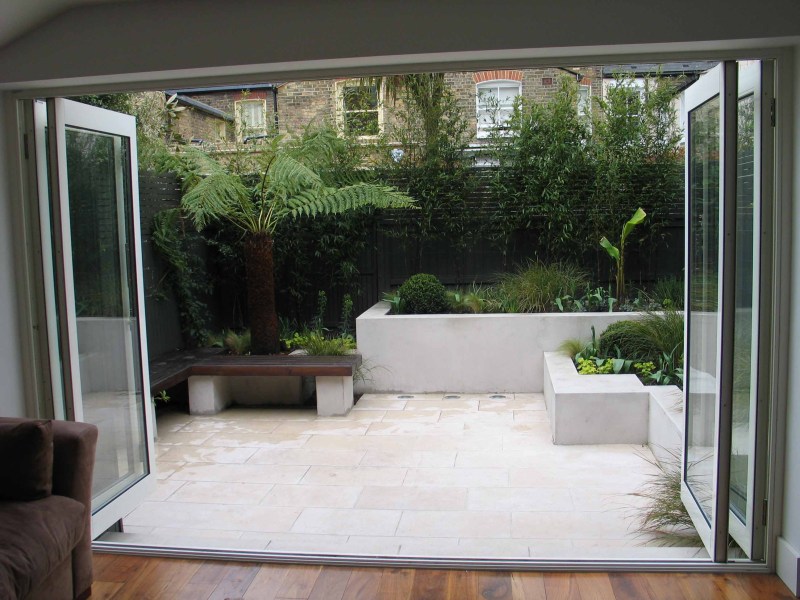
The planting in this garden by Charlotte Rowe Garden Design is against a dark fence, making it look more lush and generous.
12) Lighting is key in urban gardens
Charlotte is the Queen of Garden Lighting, regularly winning the top garden design awards for her lighting design. She believes that lighting is key to a successful town garden, because – especially in winter – you’ll be looking at the garden at night from the house.
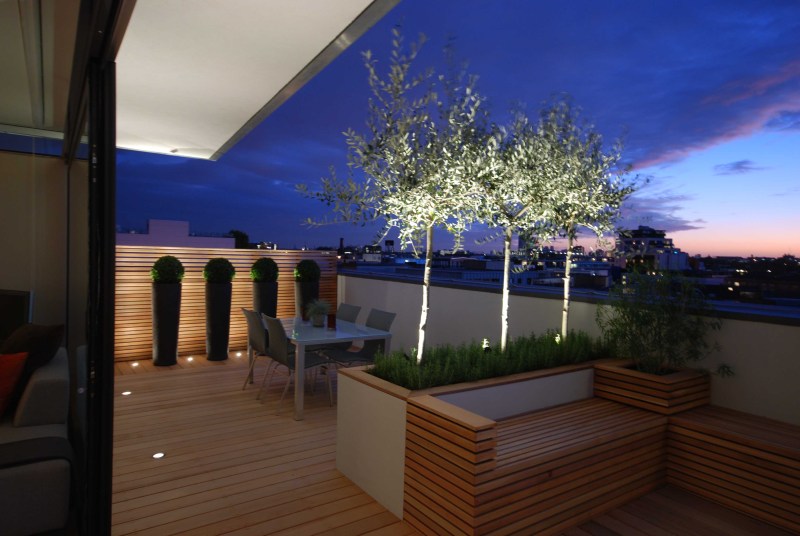
Wonderfully effective lighting gives this roof garden even more wow factor. Photo by Charlotte Rowe GardenDesign.
And a bonus tip for an unusual and stylish town garden
‘Fireplaces work really well in urban gardens’, says Charlotte. ‘They need to be properly built, however, with chimneys that draw properly and are protected from rain. But they really increase the time you can spend in the garden as they provide real heat, provided that you use logs rather than a gas effect.’
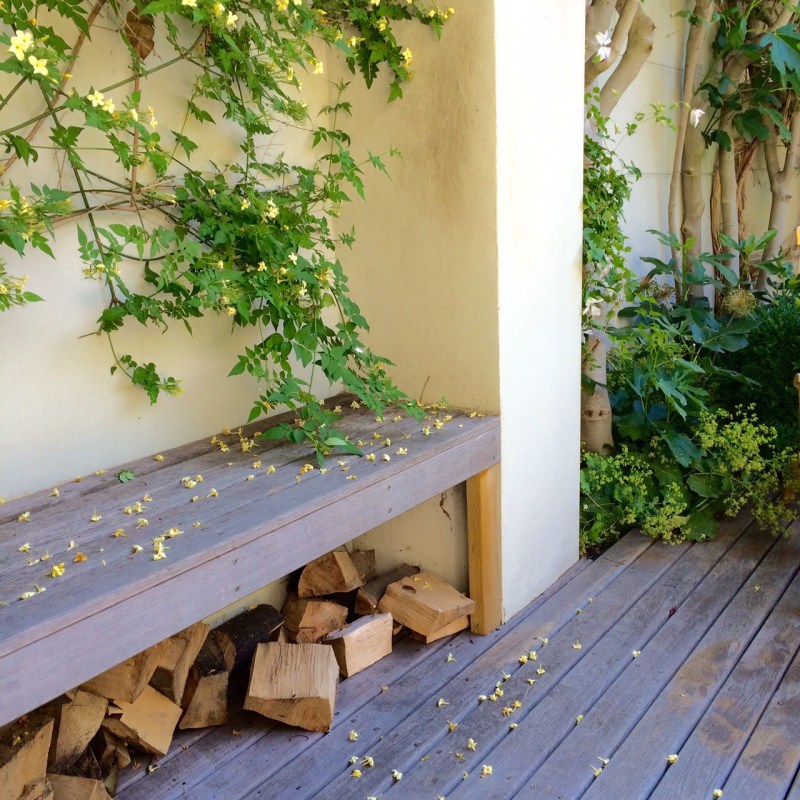
Use real logs rather than a gas effect and your garden fireplace will really keep your garden warm on chilly summer nights.
Update on Charlotte’s own urban garden
A few years ago, Charlotte extended the back of the house, so she adapted this design to fit with the new extension.
You can see the new space in this post on 5 top garden design tips (and two common mistakes to avoid) . It has more of Charlotte and Tomoko’s top tips, plus the two garden design mistakes you definitely want to avoid making!
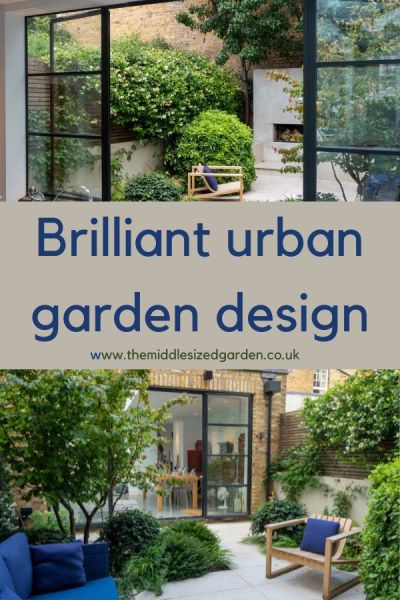
Charlotte amended the design of her garden when she extended her kitchen. The big features – the fireplace and raised beds – stayed in place, and the new design means that you enjoy a full view of the garden from the kitchen all year round.
And to see Charlotte and Tomoko in Charlotte’s garden, talking about how to design a garden, then watch this video:
If your small urban garden design problem is one of being wider than it is long, then see these tips for a wide, shallow garden here.
Best books on garden design
Charlotte Rowe Garden Design has featured in many of the best books on garden design. This includes the much-loved Garden Design, A Book of Ideas by Heidi Howcroft and Marianne Majerus as well as the RHS Encyclopedia of Garden Design, The company also features in several books on roof terrace gardens, including Rooftop Terrace & Gardens, a Step-by-Step Guide by Caroline Tilston.
Note that links to Amazon are affiliate, see disclosure.
Pin to remember urban garden design tips
And do join us – see here for a free weekly email with more gardening tips, ideas and inspiration.
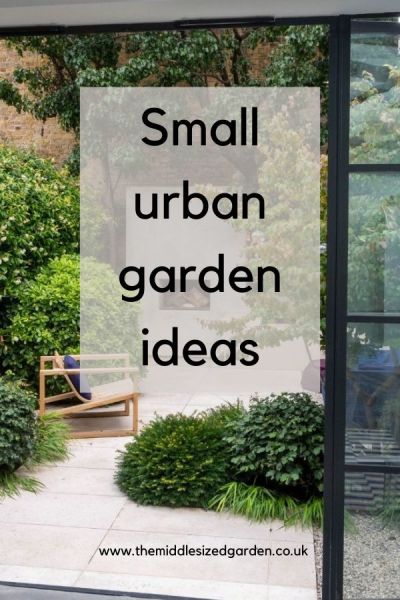

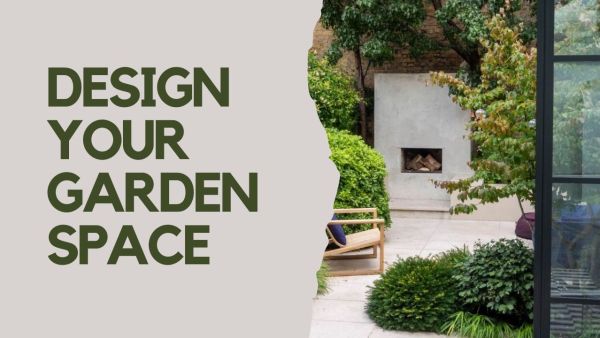























This garden leaves me stone cold ! I feel uncomfortable just looking at it. It has harsh lines and the fire chimney is in my opinion an eyesore !
This garden does not resonate with me. I’d enjoy a visit there… but would not want all that concrete nor all those rectanglular or square spaces. The plantings are lovely. I am amazed she is a renowned landscape architect and has a book from that little garden. It lacks life, soul and fantasy… not to mention there are not many blooming flowers.
I always think it’s great that we all like and dislike different gardens, it’s what so interesting about gardens. And as you say, there’s often something to admire even in a garden that you don’t care for overall.
Charlotte”s gardens resonate with so many people since they showcase what can be done in a small space with meticulous attention to use of space and to every detail. Your blog is a fantastic insight into the care and design flair needed to create an outdoor space that can be enjoyed all year. Thanks Alexandra!
Thank you!
A fantastic article with some beautiful insights. Having used dark fencing ourselves they certainly do make a garden, particularly a urban garden, appear larger. Fencing also does a wonderful job of protecting the stunning plants you’ve planted from the wind. Although, in a city this isn’t a huge issue. Thanks for the great article! Keep them coming for us gardening folks!
Thank you!